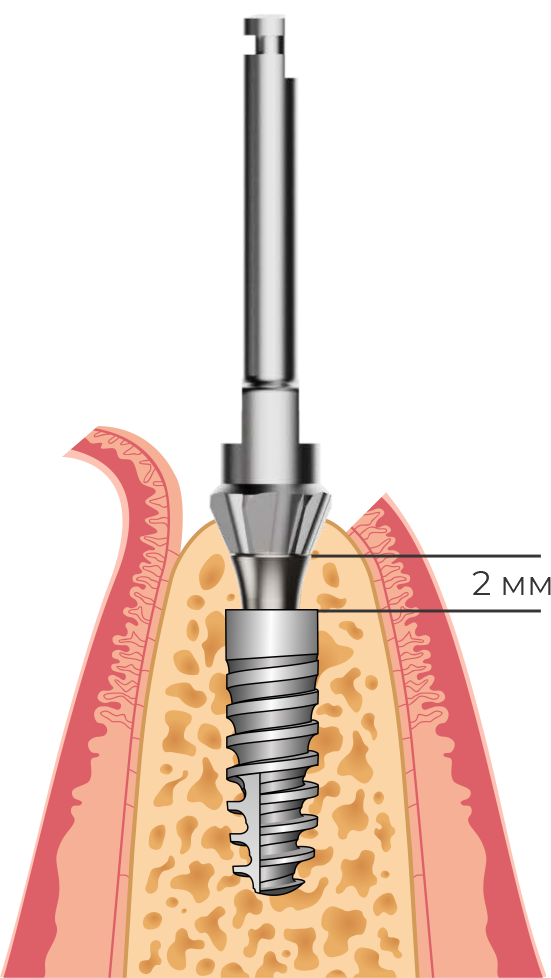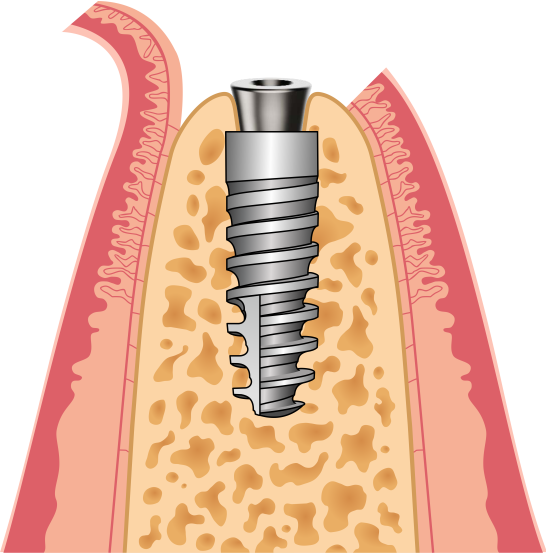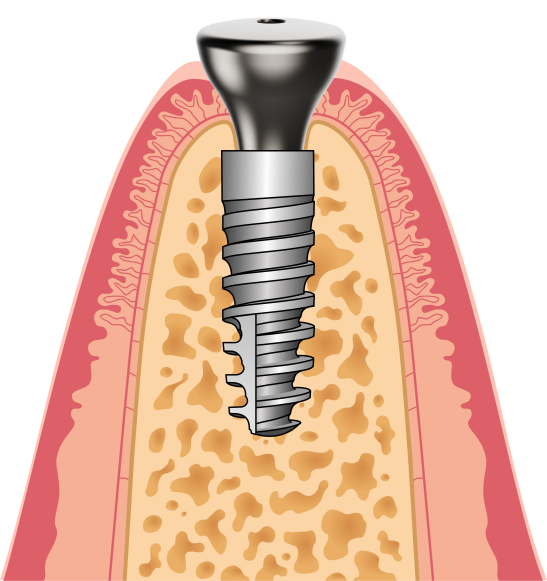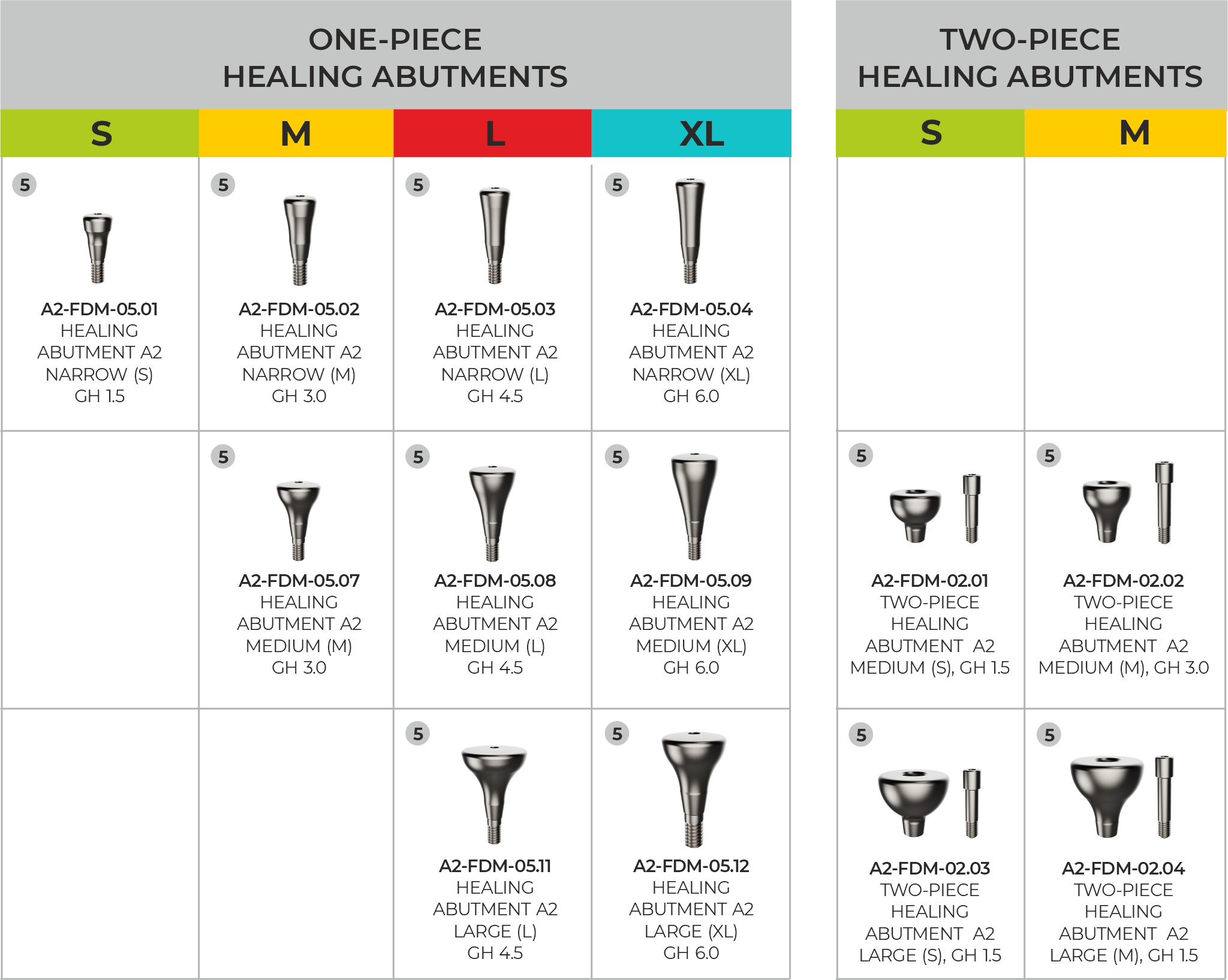A2 TISSUE MANAGEMENT
Tissue formation around the implant can be performed using a submerged, transgingival or immediately loaded protocol.

A2 DENTAL IMPLANTS are designed for subcrestal placement (below the top of the alveolar ridge). The depth is determined individually, taking into account the anatomy of the bone and soft tissue, so that the total distance from the apex of the crown to the implant shoulder is 4-5 mm.

If the A2 implant is placed more than 2 mm subcrestally additional bone profiling is required. Use the A2 PROFILING ABUTMENT as a depth gauge and as a guide for the bone profiler.

For submerged healing, A2 COVER SCREWS are used to isolate the internal portion of the implant and begin bone formation. Depending on the anatomical situation, 0 mm, 1 mm and 2 mm cover screws may be preferred.

A2 HEALING ABUTMENTS are used to shape the soft tissue cuff around the implant. Healing abutments are selected based on the thickness of the soft tissue, the amount of subcrestal placement, and the emergency profile of the future crown.
Narrow A2 HEALING ABUTMENTS (ø 3.5 mm) – upper lateral incisors, lower incisors.
Medium A2 HEALING ABUTMENTS (ø 5.5 mm) – canines and premolars.
Wide A2 HEALING ABUTMENTS (ø 7.5 mm) – molars and central incisors.
Use two-piece abutments for customization.

A2 TEMPORARY ABUTMENTS can be used for both immediate and delayed loading. The long supra-gingival abutment length (8.0 mm) can be reduced to the appropriate level. Deep retention grooves facilitate direct relining of PMMA crowns.

